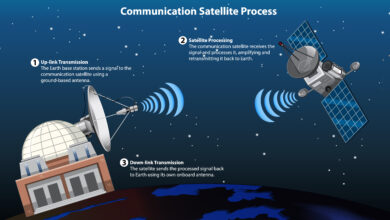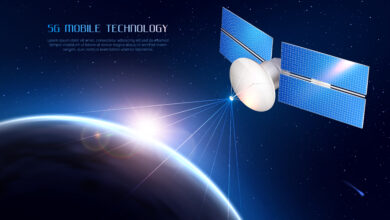Starlink Satellite Speed and Price: Cost of Fast Global Internet

Satellite internet has long been viewed as a last resort for people living in remote or rural areas. Traditional providers offered limited speeds, high latency, and expensive packages. That changed when SpaceX introduced Starlink, a global satellite internet project designed to deliver high-speed, low-latency broadband to even the most underserved regions. Many users today want to understand the Starlink satellite speed price balance – in other words, what speeds they can expect and how much it will cost.
What Is Starlink?
Starlink is a satellite internet service developed by SpaceX, the aerospace company founded by Elon Musk. Unlike traditional geostationary satellites, which orbit about 35,000 kilometers above Earth, Starlink uses a constellation of low Earth orbit (LEO) satellites at altitudes between 340 km and 1,200 km.
This design reduces latency and improves performance, giving users broadband-like speeds that rival or even surpass some land-based connections. The Starlink satellite speed price combination has made it a serious contender in the global internet market.
Starlink Satellite Speed – What to Expect
One of the most common questions potential users ask is: How fast is Starlink? The answer lies in real-world performance data.
- Download Speeds: 100 Mbps to 250 Mbps (sometimes higher in certain regions).
- Upload Speeds: 20 Mbps to 50 Mbps.
- Latency: 20 ms to 40 ms, far lower than traditional satellite systems.
These figures make Starlink suitable for streaming HD content, participating in video conferences, gaming, and using cloud-based services.
While speeds may fluctuate depending on location, satellite coverage, and network demand, the average performance is more than sufficient for most households and businesses. The appeal lies in how Starlink bridges the digital divide with an affordable satellite speed price package.
Starlink Internet Pricing
When analyzing the Starlink satellite speed price factor, it’s important to break down costs:
- Hardware Cost: The Starlink kit, which includes a satellite dish, Wi-Fi router, cables, and mounting equipment, typically costs around $599.
- Monthly Subscription: Standard plans generally range from $110 to $120 per month, depending on region and service level.
- Business Plans: For companies requiring higher speeds, lower congestion, and better reliability, business plans can cost between $250 to $500 per month.
- Mobile/RV Plans: Designed for users on the move, these plans often carry slightly higher monthly fees for flexibility.
Considering the Starlink satellite speed price equation, users get speeds comparable to fiber and cable connections without the need for physical infrastructure.
Why Starlink’s Pricing Is Justified
While some may find the upfront cost of the dish and subscription relatively high, the Starlink satellite speed price balance makes sense for several reasons:
- Global Coverage: It provides access where no other broadband option is available.
- Performance: Starlink offers speeds that rival traditional broadband, unlike older satellite services.
- Scalability: As more satellites are launched, congestion decreases, and performance improves.
- Reliability: Perfect for areas prone to outages or lacking fiber coverage.
Comparing Starlink Satellite Speed Price with Traditional Options
| Service Type | Average Speed | Monthly Price | Latency | Availability |
| Starlink | 100–250 Mbps | $110–$120 | 20–40 ms | Global (rural & urban areas) |
| Fiber Broadband | 300 Mbps–1 Gbps+ | $50–$100 | 5–20 ms | Limited to urban areas |
| DSL | 10–100 Mbps | $30–$70 | 30–60 ms | Widely available in cities |
| Old Satellite | 10–30 Mbps | $70–$100 | 600+ ms | Remote/rural areas |
This comparison highlights that while the Starlink satellite speed price may be slightly higher than fiber in urban areas, it offers unbeatable value in regions where no other option exists.
Factors Affecting Starlink Satellite Speed
Several variables influence performance:
- Geographic Location: Speeds vary depending on the density of users and satellite coverage in your region.
- Weather Conditions: Heavy rain or snow can temporarily impact speeds.
- Obstructions: Trees, hills, or tall buildings may disrupt the dish’s line of sight.
- Network Congestion: High demand during peak hours can reduce performance, though this improves as more satellites are launched.
Understanding these factors helps users maximize the value of the Starlink satellite speed price package.
Who Benefits Most from Starlink?
The Starlink satellite speed price model makes it attractive for several groups:
- Rural Households: Residents in underserved regions can enjoy reliable broadband.
- Businesses in Remote Areas: Mining, agriculture, and logistics sectors benefit from real-time connectivity.
- Travelers & RV Users: Mobile plans allow internet access anywhere within coverage areas.
- Emergency Responders: Starlink provides critical communication during natural disasters.
The Future of Starlink Satellite Speed Price
Starlink continues to grow rapidly, with thousands of satellites already in orbit and thousands more planned. The future promises:
- Faster Speeds: As technology evolves, speeds may exceed 300 Mbps consistently.
- Lower Latency: Inter-satellite laser links will further reduce delays.
- More Affordable Plans: Competition and expanded coverage may lead to reduced costs.
- Wider Adoption: Businesses, governments, and individuals will increasingly adopt Starlink as a mainstream internet option.
The balance of Starlink satellite speed price will improve even further as performance increases and pricing becomes more competitive.
Conclusion
The Starlink satellite speed price combination offers a groundbreaking solution for global connectivity. With download speeds reaching up to 250 Mbps, low latency, and expanding coverage, it is transforming how people in remote and rural areas access the internet. Although the hardware and monthly fees may seem high, the unmatched accessibility, performance, and reliability justify the cost.





